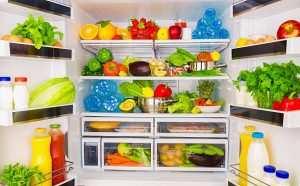The History of Refrigeration
Refrigeration has revolutionized the way we store and consume food. The journey of refrigerated foods traces back to ancient times when people stored food underground or in cool, dark caves to preserve it. However, the real breakthrough came with the invention of the icebox in the 19th century. These wooden or metal containers insulated with cork or straw kept perishables cool using blocks of ice harvested from lakes and rivers during winter. This innovation extended the shelf life of foods and reduced the risk of spoilage. Chilled Chronicles: Exploring the World of Refrigerated Foods
The 20th century brought about further advancements in refrigeration technology. Electric refrigerators became common household appliances, replacing the need for iceboxes. With the introduction of Freon refrigerants in the 1920s, refrigerators became more efficient and accessible to the general public. This marked the beginning of a new era in food preservation.
The Rise of Refrigerated Foods
Refrigeration not only changed how we store food but also revolutionized the food industry itself. The ability to keep perishable items fresh for longer periods allowed for the mass production and distribution of refrigerated foods. This led to the emergence of a wide range of products, including dairy, meats, fruits, vegetables, and ready-to-eat meals, all conveniently available in the chilled section of supermarkets.
One of the most significant developments in refrigerated foods is the concept of convenience. Ready-to-eat meals, pre-cut fruits and vegetables, and pre-cooked meats have become staples in many households, catering to busy lifestyles and the demand for quick and easy meal solutions. The convenience factor has transformed the way we eat, making fresh and healthy options more accessible than ever before.
The Science Behind Refrigeration
At the heart of refrigerated foods lies the science of refrigeration. Refrigerators work by removing heat from the interior compartments and expelling it outside, keeping the temperature inside low enough to slow down bacterial growth and preserve food. This is achieved through a cycle of compression, condensation, expansion, and evaporation, facilitated by a refrigerant fluid circulating through coils inside the refrigerator.
The temperature at which food is stored plays a crucial role in maintaining its quality and safety. Different types of foods require different storage temperatures to prolong shelf life and prevent spoilage. For example, dairy products should be kept between 35°F and 40°F, while meats and poultry are best stored at temperatures below 40°F to prevent bacterial growth.

The Future of Refrigerated Foods
As technology continues to advance, the future of refrigerated foods looks promising. Innovations such as smart refrigerators equipped with sensors and cameras offer real-time monitoring of food inventory and freshness, reducing waste and ensuring optimal storage conditions. Furthermore, advancements in packaging materials and techniques help extend the shelf life of refrigerated foods, minimizing food spoilage and increasing sustainability.
The growing demand for healthier and more sustainable food options is driving innovation in the refrigerated foods industry. Plant-based alternatives, organic products, and sustainably sourced ingredients are becoming increasingly popular among consumers. Manufacturers are responding to these trends by developing innovative refrigerated products that cater to a diverse range of dietary preferences and lifestyles.
In conclusion, refrigerated foods have come a long way since the days of iceboxes and blocks of ice. The evolution of refrigeration technology has transformed the way we store, distribute, and consume food, offering convenience, freshness, and safety to consumers worldwide. As we look to the future, continued innovation in refrigerated foods will undoubtedly shape the way we eat for generations to come.

Recent Comments